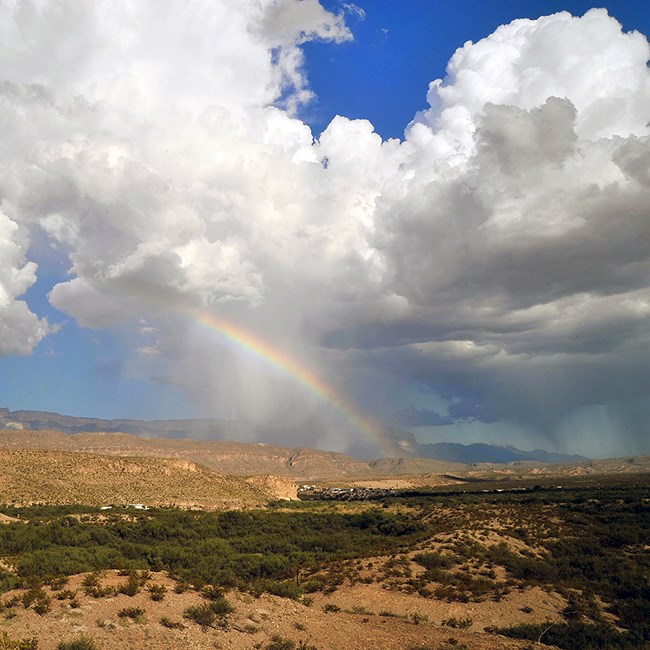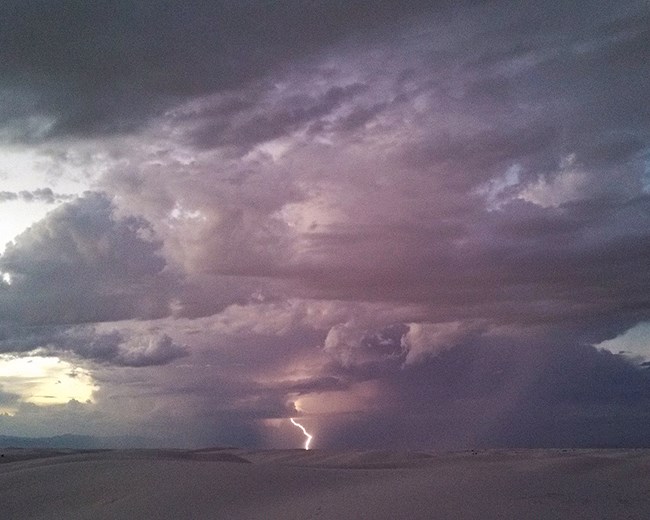
NPS/Mark Schuler
Overview
Precipitation and temperature are primary factors that determine an ecosystem’s structure and function. Other factors include long-term climate patterns, such as timing, duration, and intensity of extreme weather (like frosts and violent downpours), and the variance in seasonal dynamics between and among years.
These drivers greatly influence which plant species are present, habitat suitability for wildlife, surface and subsurface hydrology, how nutrients are cycled, and the relationships between soil, plants, and water availability. They can also affect how susceptible—or resilient—an ecosystem is to disturbance. In the Chihuahuan Desert Ecoregion, vast differences in aspect and topography make for a spatially variable climate.
Information on broad-scale weather and climate conditions helps guide fire management, habitat protection, and restoration activities, and allows us to predict exotic plant invasion, surface water availability, and plant dieoffs or recruitment events. It can also help the Chihuahuan Desert Network understand changes in other vital signs.

NPS Photo
What We Monitor
- Air temperature
- Precipitation
- Evapotranspiration
- Drought Index (severity of dryness)
Where We Monitor
- Amistad National Recreation Area
- Big Bend National Park
- Carlsbad Caverns National Park
- Fort Davis National Historic Site
- Guadalupe Mountains National Park
- White Sands National Park
Publications
Read more about our climate work in the resource briefs (short summaries) below.
Source: NPS DataStore Collection 3788. To search for additional information, visit the NPS DataStore.
Source: NPS DataStore Saved Search 3656. To search for additional information, visit the NPS DataStore.
Data Visualizer
Make your own climate graphs and tables based on precipitation and air temperature data from weather stations in and around national parks.
Read More
Last updated: December 14, 2020
